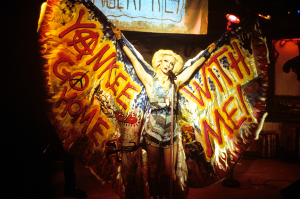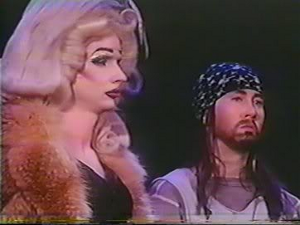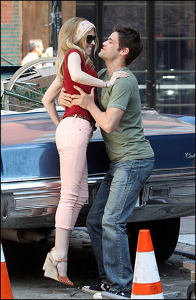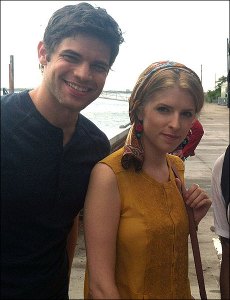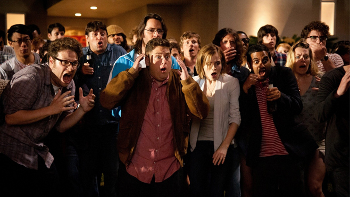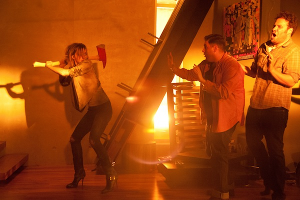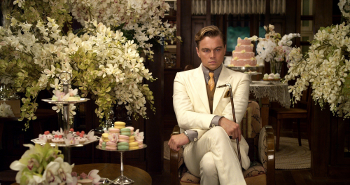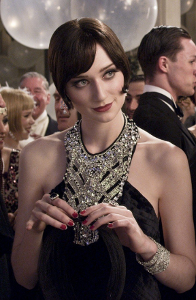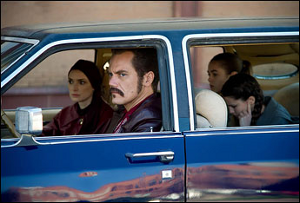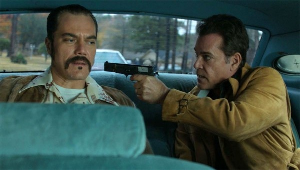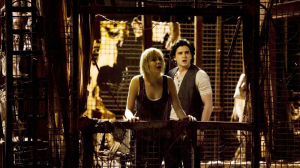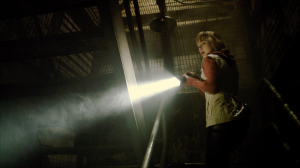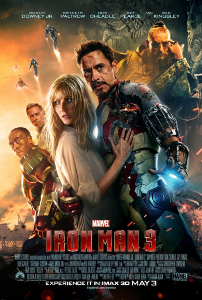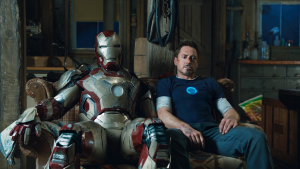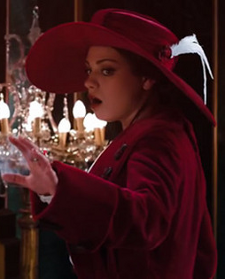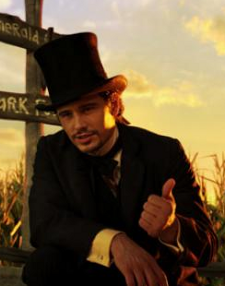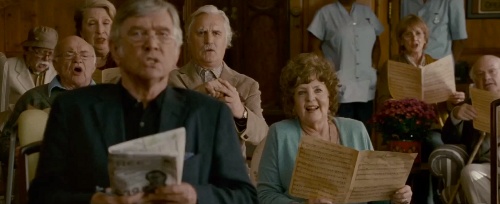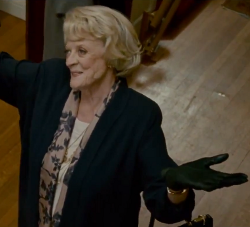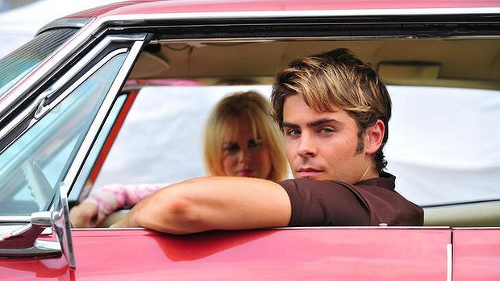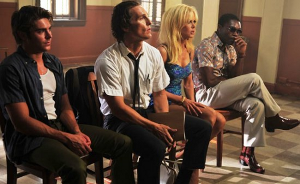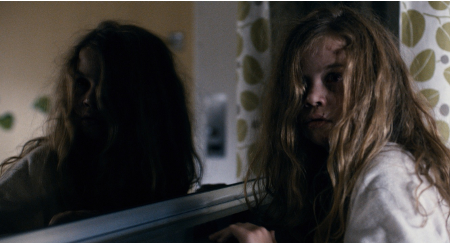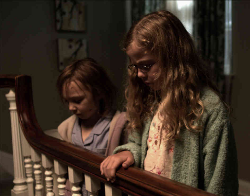When I’m not writing here or at my regular gigs (or ghostwriting/editing all over the place), I teach educational theater. One of my favorite subjects to study and explore with students is Shakespeare. There’s a beauty and magic to his work that predates the formal exploration of magical realism by centuries. The students, as a rule, really respond to the more fantastic works like Cymbeline, The Tempest, and Hamlet, though the right framing can even make the histories an exciting world for teenagers. Not that the histories aren’t exciting on their own; I love them.
Blast of Tempest is a Japanese manga turned anime from writer Kyo Shirodaira and illustrators Arihide Sano and Ren Saizaki. It is a contemporary story of magic and inter-family conflict heavily influenced by The Tempest and Hamlet. The series is a fascinating exercise in re-framing well-known narratives to create something new.
In Blast of Tempest, magic is real. Mages from feuding clans wander the earth doing everything they can to raise the magical tree from the ground that powers their family. Yoshino Takagawa stumbles into this world after his friend Mahiro Fuwa disappears from school. Mahiro, whose sister, mother, and father were killed under mysterious circumstances a year before the story takes place, obtains the powers of a mage by chance. He will do anything to find out who killed his family, even team up with Hakaze Kusaribe (the leader of another clan stranded on an island by her own followers) to fight in a war he’s not a part of.

Yohino (left) goes where Maharo goes in Blast of Tempest
The story uses flashbacks and magic to present an original murder mystery/thriller through the lens of two of Shakespeare’s most fantastic (as in, driven by unbelievable fantasy) works for a new audience. There are parallels to characters and plot points all over
Blast of Tempest. It’s not even limited to just
Hamlet and
The Tempest; those are just the major influences.
The Tempest and Hamlet are on opposing sides of Shakespeare’s catalog. The former is a broad comedy all about spectacle, magic, and romance. The latter is a dark tragedy about murder, mayhem, and broken lives. Yet, both stories are linked by a major betrayal–Prospero and Miranda are abandoned on the island in The Tempest and Hamlet’s future throne is stolen by his uncle with murder most foul–and large otherworldly conceits–The Tempest has magic and fairies, Hamlet has ghosts and nightmares.
The difference between a tragedy and a comedy in Shakespeare’s work is whether it ends in a funeral or a wedding. The comedies can be very dark and foreboding and the tragedies can be quite light until the ending flips the tone for a happily or miserably ever after.
Each major character in Blast of Tempest has a direct connection to characters in Hamlet and The Tempest. It’s a great literary device that builds a huge amount of suspense very quickly. The comedy and the tragedy cannot exist simultaneously for long because, at some point, the audience needs to be instructed to laugh or cry.
Mahiro’s connections are the clearest. He is Hamlet himself on a quest for revenge against the person who killed his family. He behaves in reckless and erratic ways to gain an advantage and distract from his quest for revenge.
He is also Caliban from The Tempest. The one person he lived for, his sister Aika, is dead long before the story of Blast of Tempest begins. He relinquishes control of his life to the mage Hakaze for some chance at a greater purpose in life. He failed at protecting his sister and, for a year, failed at avenging her death. He does not like being under Hakaze’s control and constantly rebels, yet he cannot achieve his own goals without her influence.

Aika is the motivation and cause of Blast of Tempest
Aika actually has a larger presence in the story than you might imagine from a long-deceased character. Through flashbacks, she takes on a multitude of roles in the story. She is the ghost of Hamlet’s father, constantly whispering in Mahiro’s ear about the need for revenge. She is Ophelia to Mahiro’s Hamlet. Her death forces him to form a plan of action against whoever killed his family. Aika is also Sycorax from
The Tempest, the long-dead sorceress who gave Mahiro’s Caliban a reason to live.
Yoshino probably covers more characters than anyone else in the series. In the present story, he voluntarily places himself as Horatio to Mahiro’s Hamlet. He is the foil for Mahiro’s revenge plan and a loyal friend to the family. He will do anything for Mahiro because he knows that, without his help, Mahiro will destroy his life by taking his aggression out on the wrong person.
Yoshino also acts as Alonso from The Tempest, falling in love with the beautiful Aika and dooming himself to suffer through the world of magic he never knew existed. His own relationship with Aika–against the wishes of Mahiro–makes Yoshino the Hamlet figure, as well. He does everything he can not to fall in love with Aika’s Ophelia and dooms them both to misery when she can’t let go of him. Blast of Tempest has this great tension with Yoshino always on the verge of becoming even more reckless than Mahiro because of his world being so radically changed.
Hakaze acts as a number of different characters, as well. Because she is banished to an island by her own followers, she is Prospero in The Tempest. The once great leader is betrayed by the man she trusted the most and forced to live out her days unable to return to the world she created.

Hakaze’s powers are wind and weather related, like Prospero in The Tempest
The physical separation also places her as the Ariel figure in
The Tempest. She can have control over the world without being noticed but only if she’s directly following the orders from Mahiro on his quest for revenge. Mahiro only hears her voice, placing her as the ghost in
Hamlet. She tells him who is responsible for the murder of his family and how to get revenge, but cannot physically be there to really get involved in that.
Blast of Tempest‘s connections to William Shakespeare go much deeper than this cursory analysis. The characters strategically quote and paraphrase Shakespeare throughout the series. Minor and supporting characters alike through multiple roles whenever it is convenient to the story (Fraulein Yamamoto is Laertes to Yoshino’s Hamlet until she learns the truth and becomes Horatio and Ariel in one). Imagery from The Tempest defines the visual style of the magic in the series and individual scenes are structured around the brooding two-person at a time conceit of Hamlet.
What Blast of Tempest offers is a highly literate gateway for theater fans to engage with anime and manga for the first time. This is not a Westernized series even if it heavily draws on the most influential playwright in all of Western theater. It is a tightly wound explosion of magical anime marketed at boys as young as 10 but probably better appreciated by a more mature audience.
Thoughts on Blast of Tempest? Share them below.
 Sofia Coppola has a wealth of shallow characters to work through in this film. Aside from paranoid Marc and sociopath Rebecca, she focuses a good chunk of the film on the delusional Nicki. Nicki (Emma Watson in a masterful comedic performance) is obsessed with celebrity. She’s home-schooled by her mom using the curriculum in The Secret and parties every night to try to grab the eye of just the right person to give her instant fame. Her mother hands her and her sisters Adderal like it’s Pez throughout the day. Nicki is a total mess and that makes her the most compelling character in The Bling Ring.
Sofia Coppola has a wealth of shallow characters to work through in this film. Aside from paranoid Marc and sociopath Rebecca, she focuses a good chunk of the film on the delusional Nicki. Nicki (Emma Watson in a masterful comedic performance) is obsessed with celebrity. She’s home-schooled by her mom using the curriculum in The Secret and parties every night to try to grab the eye of just the right person to give her instant fame. Her mother hands her and her sisters Adderal like it’s Pez throughout the day. Nicki is a total mess and that makes her the most compelling character in The Bling Ring.
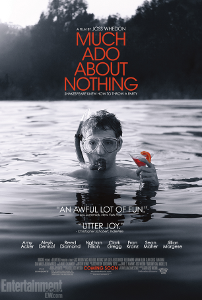 Leonato, the governor of Messina, allows Don Pedro’s men to stay in his home for a month after their victory. Claudio, a member of Don Pedro’s court, falls hopelessly in love with Leonato’s daughter Hero. Beatrice, Leonato’s niece, trades barbs with Benedick, a friend of Don Pedro. Meanwhile, Don John (Don Pedro’s brother) plots against the celebration to spite his brother’s victory. Also, a foolish police constable named Dogberry attempts to maintain order with the sudden influx of guests.
Leonato, the governor of Messina, allows Don Pedro’s men to stay in his home for a month after their victory. Claudio, a member of Don Pedro’s court, falls hopelessly in love with Leonato’s daughter Hero. Beatrice, Leonato’s niece, trades barbs with Benedick, a friend of Don Pedro. Meanwhile, Don John (Don Pedro’s brother) plots against the celebration to spite his brother’s victory. Also, a foolish police constable named Dogberry attempts to maintain order with the sudden influx of guests.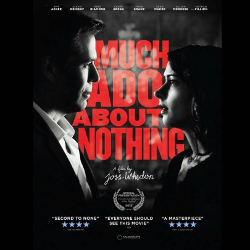 Whedon knows how to play up drama. The wedding (Act IV, Scene 1), my favorite scene in all of Shakespeare’s works, is shocking here. It took my breath away. I was crying in the theater, so engrossed in the moment that I forgot everything I knew about Shakespeare’s comedic form and the play itself. To see these characters so alive with alcohol and shenanigans fall apart to scandal and crime is heartwrenching. The pace grinds to a halt and freezes the moment so you’re forced to endure the full pain of Don John’s heinous scheme.
Whedon knows how to play up drama. The wedding (Act IV, Scene 1), my favorite scene in all of Shakespeare’s works, is shocking here. It took my breath away. I was crying in the theater, so engrossed in the moment that I forgot everything I knew about Shakespeare’s comedic form and the play itself. To see these characters so alive with alcohol and shenanigans fall apart to scandal and crime is heartwrenching. The pace grinds to a halt and freezes the moment so you’re forced to endure the full pain of Don John’s heinous scheme. Soon, in 2014, we’re finally going to see Hedwig and the Angry Inch on Broadway. John Cameron Mitchell has been working on changes to the book for years to account for the different space and societal changes since the show debuted.
Soon, in 2014, we’re finally going to see Hedwig and the Angry Inch on Broadway. John Cameron Mitchell has been working on changes to the book for years to account for the different space and societal changes since the show debuted.